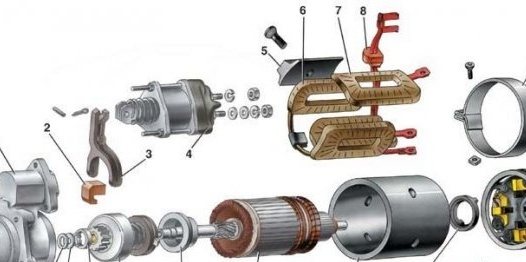I took off the starter 10 times, checked everything in general, there was only an inter-turn circuit in the stator. The stator is made of a copper bus, only 3 coils, but can these turns be short-circuited? And how to check?
DIAGRAM
1 - starter cover on the drive side;
2 - rubber plug;
3 - drive lever;
4 - traction relay;
5 - stator pole;
6 - service coil of the stator winding;
7 - shunt coil of the stator winding;
8 - rubber plug;
9 - a protective tape;
10 - cover sleeve;
11 - a cover from outside a collector;
12 - brush;
13 - brush spring;
14 - a brake disk of a cover;
15 - case;
16 - coupling pin;
17 - anchor;
18 - gear stroke limiter;
19 - freewheel clutch with gear drive;
20 - a restrictive ring;
21 - thrust washer;
22 - an adjusting washer

